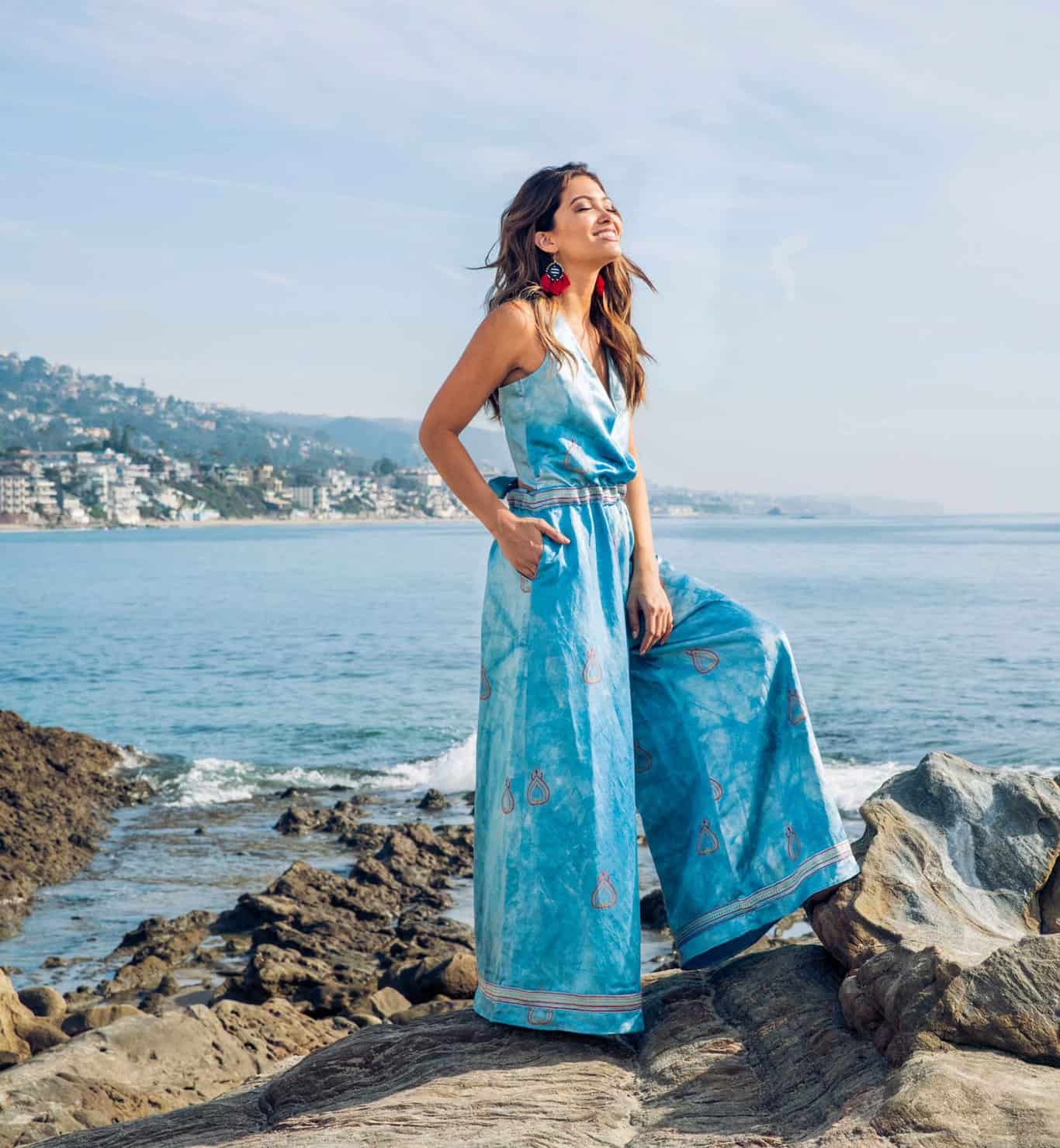As the soft material from milo + nicki wafts in the breeze in colours that perfectly set off a tan, you’d hardly think it was made from banana waste.
Ethical and sustainable fashion brand milo+nicki settled on the Indian waste product to make its new capsule collection.
“Banana fibers come from the leftover stalks of banana plants after they have been harvested for food,” explains founder Nicki Patel.
“The stalk of banana plant contains long fibrous strand that are perfect for processing into pliable fibers. The banana fibers are sustainable, biodegradable and eco-friendly. The fibers are milled to create thread and the thread is woven into fabric.”
It sounds so simple but is just one of many new fabric processes happening around the world to combat the hugely polluting impact that fast fashion has on the planet.
“Sustainable fashion is one piece of a huge dynamic puzzle that has created global warming, social issues, political turmoil, extinction of certain species, rare and incurable diseases, and climate change. We as consumers can make a dent in saving the world by our choices; choices from what we wear to how we live,” says Patel.
What’s Wrong With Fast Fashion?


She set up milo+nicki in 2014 as an Indian and Zambian inspired, ethically sound but luxurious fashion brand, it’s perfect for long holidays and summer evenings in beach bars.
The Bandhani Collection is small-batch capsule is made of 10 pieces that can be reversed, mixed and matched to create 25 looks.
It is biodegradable, sustainable, ethical, fair-trade, vegan, cruelty-free and all handmade and hand-dyed – and made almost entirely from leftover banana fibres.
“The entire collection is made of banana fibre except the Diwali jacket which is made from vintage organic cotton Kantha quilts, and the”it’s a party” holiday dress is made from certified ahimsa silk and a GOTS certified organic cotton blend,” she explains.
She prefers to work to capsule collections to keep the focus on buying less and buying better,
“With a capsule collection you are minimising your pieces which is better for the planet, but still able to feed into self-expression by mixing and matching to create a totally unique look.”
16 New Ethical Clothing Brands To Love

“I don’t believe sustainable fashion will save the world. I think people can save the world”
Having a lighter impact on the planet is what the brand is all about, without sacrificing the street style.
She also wants to add clarity to the oft-muttered consumer questions of what is ethical and what is sustainable when it comes to fashion.
“Ethical fashion is by whom and how the product is made. It generally covers working conditions (building conditions and human relations), the employees, enforcement of labor laws (fair wages and safe conditions), and the lasting effects the products have on people who produce them and future generations to come,” she explains.
“Sustainable fashion is what the product is made of and the longevity and lifecycle of the product. This usually encompasses the design of the product, the impact of the process on people, animals, and the planet, the materials used to create the product, and the overall impact on the environment through social responsibility.
I believe that most consumers don’t realise that ethical does not mean sustainable, and so a clothing brand could be ethical, but does not necessarily have to be sustainable.
I think it is ultimately a personal choice, but for milo+nicki, we believe how our pieces are made and by whom is just as important as what it is made of.

So can fashion save the world?
No she says but it can help push us in the right direction.
“I don’t believe sustainable fashion will save the world. I think people can save the world,” she says.
If we are more conscious of the decisions we make, whom we support, and how it impacts others, we can make strides in restoring our planet and society. By starting with what we wear, it would be a great step forward for us to save our planet.
We need to remember to ask questions about how it is made, by who is it made, where is it made, and what is it made of, and use that knowledge to vote for a better future for our planet and humanity.”










